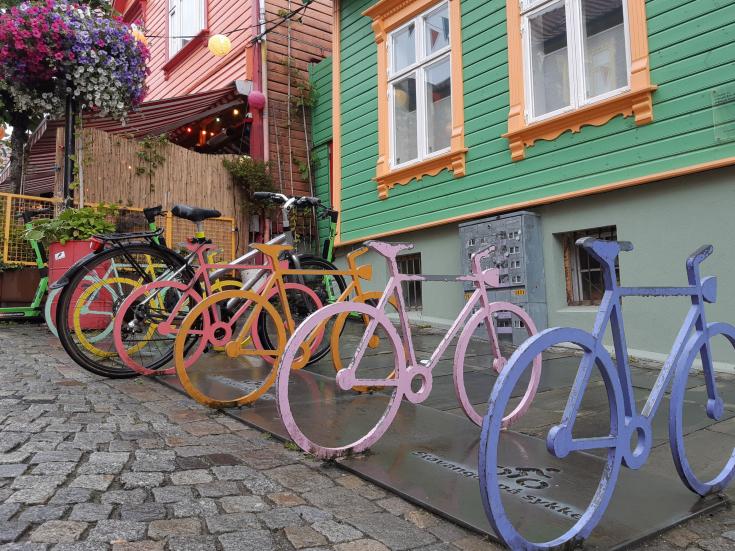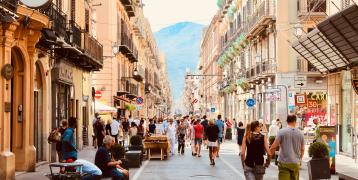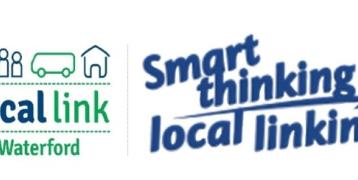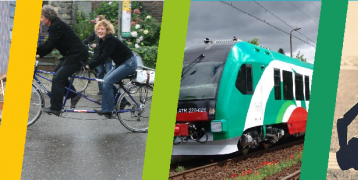Wide-area SUMPs

On 1 June 2023, the Policy Learning Platform organised a matchmaking at the request of Livorno Province, Italy, to explore wide-area Sustainable Urban Mobility Plans (SUMPs).
The Province wants to develop a SUMP that covers an area wider than the province’s own 19 municipalities, also bringing in neighbouring municipalities from Pisa (seven municipalities) and Grosseto (three municipalities). While Livorno city has a SUMP, as do other municipalities, they are not integrated at a wider territorial level.
The municipalities of this area cover a wide variety of territorial types (such as cities, villages, rural areas, coastal areas, and islands) and contain different types of users, including students, tourists, and elderly people.
Livorno foresees the use of different approaches, with different modes and business models including high-frequency Local Public Transport Services, services for vulnerable groups, transport services for tourists, and Mobility as a Service (MaaS).
Host and participants
Beneficiary:
- Irene Nicotra, Livorno Province, Italy
- Ivo Tartaglia, Livorno Province, Italy
Peer experts:
- Ivo Cré, Director Policy and Projects, POLIS network, Brussels, Belgium
- Maria Morfoulaki, CERTH, Thessaloniki, Greece
- Dimitrios Nalmpantis, Aristotle University of Thessaloniki, Greece
- Eleni Anoyrkati, Coventry University, United Kingdom
Interreg Europe & Policy Learning Platform experts:
- Katharina Krell, Thematic Expert Low Carbon Economy
- Simon Hunkin, Thematic Expert Low Carbon Economy
- Charo Camacho, Senior Policy Officer Low Carbon Economy
- Brume Delaunay, Policy Officer Low Carbon Economy
Key insights
-
Participants agreed that the governance aspects of a wider-area mobility solution are key to success. The creation of a new body or the assignment of new responsibilities to an existing body helps wider-area mobility planning and implementation.
-
SUMPS are a cornerstone for urban mobility planning under the new Urban Mobility Framework, working as a strategic plan to meet the mobility needs of a city in a harmonised and integrated way, and covering the functional urban area (city and commuter zones). It is not only about low emissions from transport, but also improving quality of life.
-
SUMPs should be highly participatory and inclusive of different sections of society. This includes the production of the SUMP, the monitoring of performance, and any resulting updates.
-
Metropolitan mobility needs to be tackled as part of a wider vision for urban transition. It needs to be part of a broader plan for sustainability and quality of life, including considerations of air quality, land use, green public space, water, waste, integration of renewables and climate adaptation
-
While few regional SUMPs exist in Europe, the example of Baden-Wurttemberg was highlighted as being interesting, where a SUMP was prepared as a regional vision and strategy, with individual actions to be implemented at the local level.
-
The area around Parkstad Limburg (NL) was covered by a polycentric SUMP. Eltis has provided guidance documents on the Poly-SUMP Methodology for polycentric regions.
-
The West Midlands Metropolitan Area will implement a long-term strategy for sustainable transport, via the West Midlands Combined Authority, to link the different settlements and urban centres. This includes new transport projects such as new bus rapid transit service, park and ride services, and a personal mobility platform for integrated journey planning and ticketing. The area is however different from Livorno as it is densely populated and covered with extensive transport infrastructure for inter-regional and through-traffic.
-
Thessaloniki faces mobility challenges being the only city in Europe of more than one million with no rapid transport system (subway), and being hemmed in by mountains on one side, and the sea on the other. The eight municipalities of the metropolitan area each have a SUMP, but due to the city’s geographic features, the main transport axis cross all or some of the municipalities. To integrate these SUMPs, as part of its REFORM and e-SMARTEC Action Plans, the Region of Central Macedonia is establishing a Competence Centre for SUMPs to provide technical support and ensure co-operation between the different municipalities, and develop a Metropolitan Observatory to act as a urban lab and prioritise projects, which may lead to a metropolitan level SUMP. This could demonstrate a way forward for Livorno, defining cross-municipal projects, prioritised for highest impact.
-
Even if strong public transport links and sustainable options are provided, work is still needed on behaviour change. Coventry has strong public transport infrastructure, but people are still largely using private vehicles. New projects, such as working with universities to influence student travel behaviour, are underway.
-
Demand Responsive Transport was identified as potential solutions for Livorno, providing cost-effective solutions to link rural areas with urban centres. More resources on this are provided below.
-
A significant number of cities will need to develop a SUMP in coming years. The Trans-European Transport Network (TEN-T), comprised of railways, waterways, and roads to connect the EU, is expected to make SUMPs mandatory for its urban nodes (‘urban areas where the TEN-T infrastructure is connected with other parts of that infrastructure and with the infrastructure for regional and local traffic’).
-
The number of TEN-T urban nodes is expected to increase to 430 (cities of more than 100,000 inhabitants, or of significant regional importance), with SUMPs to be developed by 2027 (TBC). Member States will need to assign a body or ministry to oversee this and provide national support programmes.
Additional sources of further information
As well as the projects mentioned above, other Interreg Europe projects and policy briefs can provide additional information on wider-area SUMPs.










